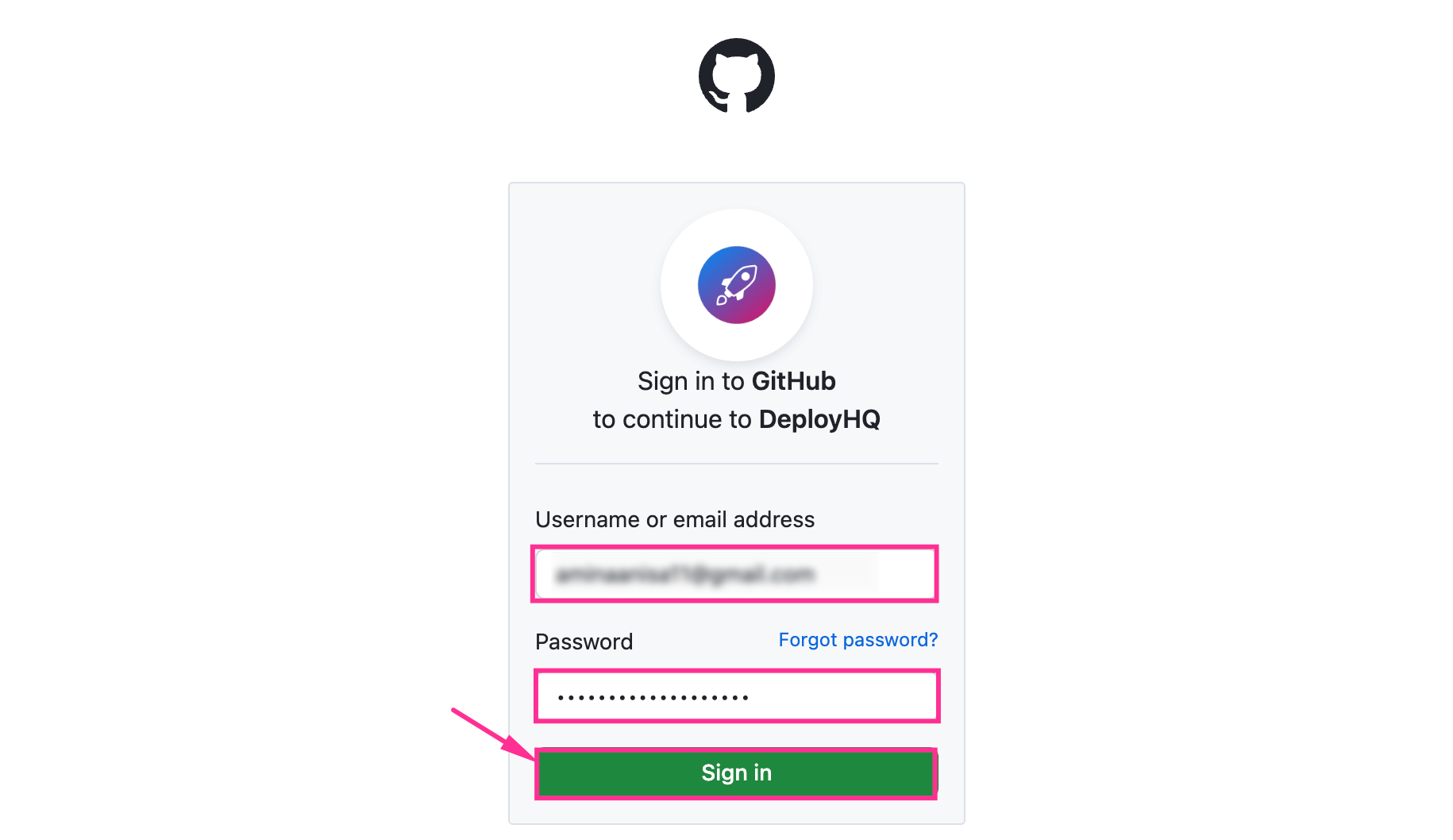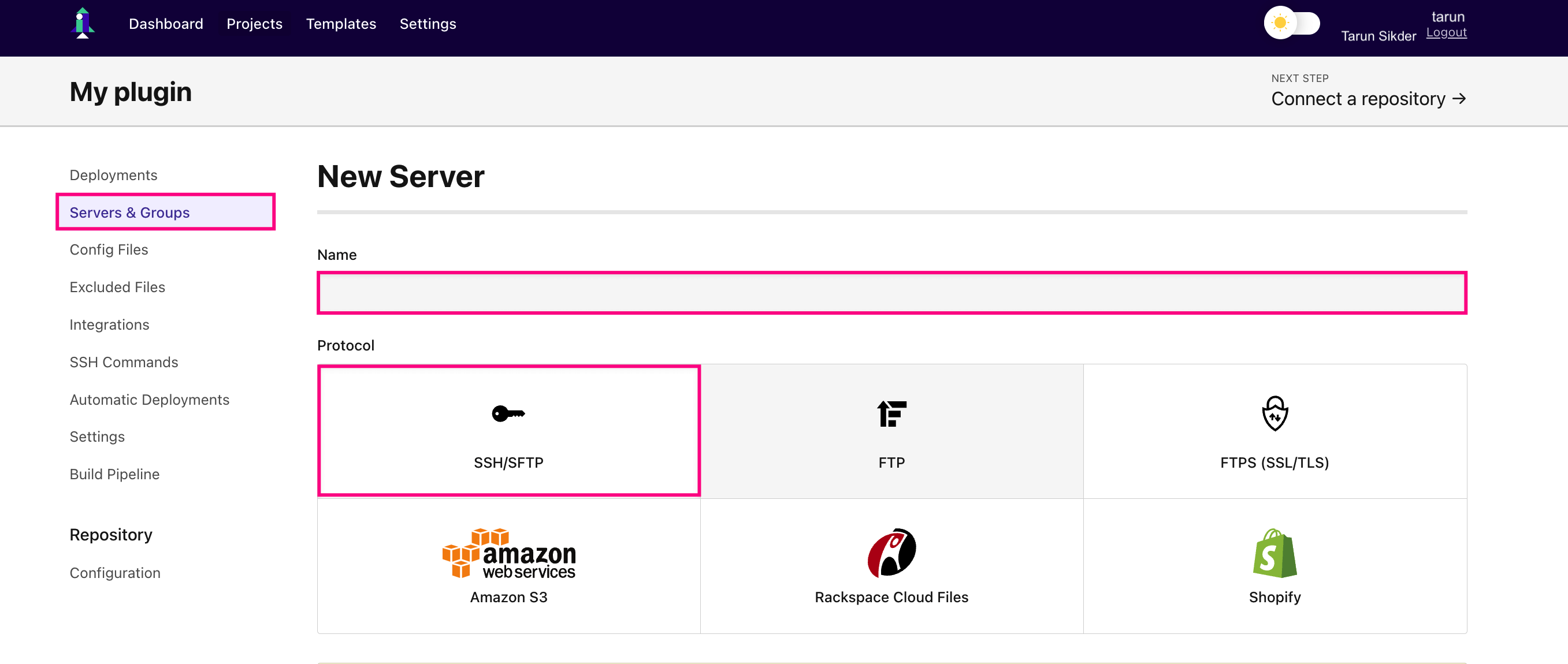Today, the difference between success and failure often comes down to speed and reliability. For software companies and development teams, this translates directly to how quickly and smoothly they can deploy new features, fixes, and updates. That is when the game-changer, automated deployment, comes into the picture in this digital era of continuous deployment.
Gone are the days when deployments were nerve-wracking, manual processes fraught with potential errors and unexpected downtime. The modern software lifecycle demands a more streamlined approach, one that can keep pace with rapid development cycles and ever-increasing customer expectations.
This ultimate guide to streamlined deployments will take you on a journey from the challenges of traditional methods to the cutting-edge solutions transforming the industry.
We'll also explore how automated deployment tools like DeployHQ are revolutionizing the way teams work, dramatically reducing time-to-market, and ensuring a consistent, reliable software delivery process.
Understanding Deployment, Its Lifecycle, and Types
What Is Deployment?
Deployment refers to the process of releasing and distributing software applications, updates, or changes to a production environment where end-users can access and interact with them. It's the final step in the software development lifecycle that bridges the gap between development and real-world application.
Key aspects of deployment include:
- Moving code from a development or testing environment to a production
- Configuring servers and infrastructure to support the new release
- Ensuring all dependencies are correctly installed and configured
- Updating databases or other data stores as necessary
- Verifying that the application functions correctly in the new environment
The Deployment Lifecycle
The deployment lifecycle encompasses several stages, forming a continuous deployment process of software delivery:
- Planning: Determining what needs to be deployed, when, and how.
- Development: Writing and testing code in a development environment.
- Building: Compiling code and creating deployable packages.
- Testing: Verifying the application in staging environments that mirror production.
- Deployment: Releasing the application to the production environment.
- Monitoring: Observing the application's performance post-deployment.
- Feedback and Iteration: Gathering user feedback and planning future improvements.
Types of Deployment
Different deployment strategies cater to various project needs, risk tolerances, and infrastructure setups:
a) Big Bang Deployment:
- Replacing the entire application at once
- Higher risk but simpler to manage
- Suitable for smaller applications or major overhauls
b) Rolling Deployment:
- Gradually updating instances of the application
- Reduces downtime and risk
- Allows for easier rollback if issues arise
c) Blue-Green Deployment:
- Maintaining two identical production environments
- Switching traffic from the old (blue) to the new (green) version
- Enables quick rollback and zero-downtime deployments
d) Canary Deployment:
- Releasing to a small subset of users or servers first
- Gradually increasing the rollout if no issues are detected
- Minimizes risk and allows for real-world testing
e) Feature Toggles:
- Deploying new features within the existing codebase but keeping them inactive
- Activating features selectively for testing or gradual rollout
- Provides flexibility in feature management
Challenges of Traditional Deployment Methods
While deployment is a critical process in software development, traditional methods often present significant challenges that can hinder efficiency, reliability, and scalability.
Understanding these challenges is crucial to appreciating the value of modern, automated deployment solutions.
Time-consuming manual processes
Traditional deployments often rely heavily on manual interventions, which can be extremely time-consuming. This includes:
- Manually copying files to servers
- Running scripts to update databases
- Configuring server settings by hand
- Conducting manual checks at each step of the process
These manual processes not only slow down the deployment but also take valuable time away from developers who could be focusing on creating new features or improving existing ones.
Increased risk of human error
With manual deployments, the risk of human error is significantly higher. Common issues include:
- Forgetting to update a crucial configuration file
- Mistyping commands or entering incorrect data
- Skipping important steps in the deployment checklist
- Inconsistently applying changes across multiple servers
Even small errors can lead to failed deployments, application downtime, or worse, introduce bugs into the production environment that are difficult to trace back to the deployment process.
Lack of consistency across environments
Maintaining consistency between development, staging, and production environments is challenging with traditional methods. Issues often arise due to:
- Different configuration settings between environments
- Inconsistent versions of dependencies or libraries
- Variations in server setups or operating systems
- Manual tweaks made in production that aren't reflected in other environments
This lack of consistency can lead to the infamous "it works on my machine" problem, where code functions correctly in one environment but fails in another.
Difficulty in scaling deployment operations
As applications grow and teams expand, traditional deployment methods struggle to keep up. Scaling challenges include:
- Increased complexity when deploying to multiple servers or regions
- Difficulty in coordinating deployments across distributed teams
- Longer deployment windows as the application size grows
- Increased risk of errors as the number of deployment steps multiplies
These scaling issues can lead to longer release cycles, reduced deployment frequency, and, ultimately, a slower pace of innovation.
By recognizing these challenges, development teams can better understand the need for more efficient, automated deployment processes.
Streamlining Deployments: The Need for Modern Solutions
As the challenges of traditional deployment methods become increasingly apparent, the need for modern, streamlined solutions has never been more critical.
Streamlining deployments is about creating a more efficient, reliable, and scalable process that can keep pace with today's rapid development cycles.
The key drivers for streamlined deployments include:
- The need for faster time-to-market
- Increasing complexity of applications and infrastructure
- Growing adoption of agile and DevOps practices
- Rising customer expectations for frequent updates and minimal downtime
Modern solutions address these needs by automating repetitive tasks, ensuring consistency across environments, and providing tools for better collaboration and visibility throughout the deployment process.
Introducing DeployHQ: Simplifying Streamlined Deployments
When it comes to modern solutions in the automated and continuous deployment era, DeployHQ stands out as a powerful tool designed to address the challenges of traditional methods and streamline the production deployment process.
What Is DeployHQ?
DeployHQ is a cloud-based automated deployment platform that simplifies and accelerates the process of deploying web applications and websites. It's designed to work with various version control systems and can deploy to multiple types of servers and platforms.
Key aspects of DeployHQ include:
- Integration with popular version control systems (e.g., Git, SVN)
- Support for multiple server types (FTP, SFTP, Amazon S3, etc.)
- Customizable deployment scripts and configurations
- Ability to manage multiple projects and environments
- Robust security features to protect sensitive deployment data
How DeployHQ Works?
DeployHQ streamlines the deployment process through several key mechanisms:
a) Version Control Integration:
It connects directly to your repository and detects changes in your codebase automatically. You can trigger deployments manually or set up automatic deployments on push.
b) Server Configuration:
You configure your server details within DeployHQ. This includes server type, credentials, and deployment paths. It securely stores this information for future deployments.
c) Deployment Process:
When a deployment is triggered, it pulls the latest code from your repository and transfers only the changed files to your server. This delta deployment approach saves time and bandwidth.
d) Customization and Scripting:
You can set up pre- and post-deployment scripts, which can handle tasks like database migrations or cache clearing. The system supports various scripting languages for maximum flexibility.
e) Multi-Environment Support:
You can configure multiple environments (e.g., staging and production). Each environment can have its own settings and deployment scripts, ensuring consistency across your CI/CD pipeline.
f) Notifications and Logging:
It provides detailed logs of each deployment and can send notifications via email, Slack, or other integrations. This keeps your team informed and aids in troubleshooting if issues arise
By leveraging these mechanisms, DeployHQ addresses many of the challenges associated with traditional deployment methods. It automates time-consuming processes, reduces the risk of human error, ensures consistency across environments, and provides the scalability needed for growing operations.
Key Features of DeployHQ
Automated deployments
Its automated deployment feature is a game-changer for development teams. It allows you to:
- Set up automatic deployments triggered by code pushes to your repository
- Schedule deployments for specific times, ideal for planned releases
- Initiate deployments with a single click for on-demand updates
This automation significantly reduces the manual effort involved in deployments, minimizing the risk of human error and speeding up the release process.
Version control integration
It seamlessly integrates with popular version control systems, including:
- Git (GitHub, GitLab, Bitbucket)
- Subversion (SVN)
- Mercurial
This integration allows DeployHQ to:
- Detect changes in your codebase automatically
- Deploy only the files that have changed since the last deployment
- Maintain a clear history of what code was deployed and when
Customizable deployment scripts
You can create custom scripts to run before, during, or after deployments. This feature allows you to:
- Perform database migrations
- Clear caches
- Compile assets
- Run tests
- Execute any other necessary tasks as part of the deployment process.
These scripts can be written in various languages, including Bash, PHP, Python, and Ruby, giving you the flexibility to handle complex deployment requirements.
Environment-specific configurations
It allows you to set up and manage multiple environments (e.g., development, staging, production) with ease. You can:
- Configure different servers and deployment settings for each environment
- Use environment variables to manage sensitive information securely
- Apply different deployment scripts and processes for each environment.
This feature ensures that your code is deployed correctly, regardless of the target environment.
Rollback capabilities
In case of issues with deployment, it offers robust rollback features:
- Quick reversion to a previous deployment with a single click
- Ability to view and select from a history of past deployments
- Option to roll back specific files or entire deployments
This capability provides a safety net, allowing you to recover from problematic deployments and minimize downtime quickly.
Top Benefits of Using DeployHQ
Time and resource savings
By automating the deployment process, it helps teams:
- Reduce the time spent on manual deployment tasks
- Free up developers to focus on writing code and solving problems
- Decrease the overall time from code commit to production deployment
These time savings can significantly impact a team's productivity and the speed of feature delivery.
Improved reliability and consistency
It enhances the reliability of your deployments by:
- Eliminating human errors common in manual deployments
- Ensuring that the same process is followed for every deployment
- Providing a clear audit trail of all deployment activities
This consistency leads to fewer deployment-related issues and easier troubleshooting when problems do occur.
Enhanced collaboration and transparency
It improves team collaboration through:
- Centralized deployment management accessible to all team members
- Detailed logs and notifications for each deployment
- Integration with communication tools like Slack for real-time updates
This transparency ensures that all team members are on the same page regarding deployment status and history.
Scalability for growing teams and projects
As your team and projects grow, DeployHQ scales with you:
- Supports multiple projects and environments within a single account
- Handles deployments to multiple servers or cloud platforms simultaneously
- Offers team management features for access control and collaboration
This scalability ensures that it can continue to meet your needs as your organization expands.
Getting Started With DeployHQ
Getting started with DeployHQ is a straightforward process:
Visit the DeployHQ website to sign up for a pricing plan or account. You can get a free account with absolutely zero payment or choose a plan that fits your needs. (It offers a free trial for all its pro packages too)
 Note: The pricing may vary depending on your location.
Note: The pricing may vary depending on your location.Insert your email to get started with a DeployHQ account

Input your name and choose a password to create your DeployHQ account.

Verify your email address

Set up two-factor authentication for enhanced security (recommended).
Familiarize yourself with the dashboard and available options.
Configuring your first project
Once your account is set up, you can configure your first project:
Click on "Create New Project" in your dashboard.

Choose your version control system (e.g., Git, SVN etc).
Connect your repository by providing the necessary credentials or OAuth access.

Set up your deployment server:
- Choose the server type (FTP, SFTP, Amazon Shopify, etc.)
- Enter server details (hostname, username, password/key)
- Specify the deployment path on the server

- Configure any build commands or compilation steps needed for your project.
- Set up environment variables for sensitive information.
If you are new to DeployHQ and looking to get started with your first project deployment, then here is a comprehensive step-by-step guide on ☞ How to Setup Your First Deployment With DeployHQ
Best Practices for Streamlining Production Deployments With DeployHQ
To get the most out of DeployHQ to streamline production deployment, consider these best practices:
- Utilize configuration files with API:
- Store deployment configurations in version-controlled files (e.g., deployhq.yml or deployhq.json).
- Include these files in your repository to ensure consistency across team members.
- Use the DeployHQ API to trigger deployments programmatically.
- Integrate with your CI/CD pipeline for seamless deployments.
- Leverage custom deployment scripts:
- Use pre- and post-deployment scripts to automate tasks like database migrations or cache clearing.
- Write modular, reusable scripts to maintain consistency across projects.
- Implement a staging environment:
- Set up a staging server that mirrors your production environment.
- Use this for final testing before deploying code to production.
- Utilize automatic deployments:
- Set up automatic deployments for your development or staging environments to speed up your workflow.
- Be cautious with automatic deployments to production; consider using manual approval steps.
- Take advantage of rollback features:
- Familiarize yourself with the rollback process.
- Regularly test your ability to roll back deployments to ensure you can quickly recover from issues.
- Monitor your deployments:
- Pay attention to deployment logs and notifications.
- Set up integrations with your team's communication tools (e.g., Slack) for real-time deployment updates.
Regularly review and update your deployment configurations:
- As your project evolves, ensure your deployment settings remain optimal.
- Periodically review access permissions and server configurations.
Document your deployment process:
- Keep clear documentation of your deployment configurations and processes. This helps onboard new team members and troubleshoot issues.
Remember, the key to successful deployments is a combination of automation, consistency, and vigilance. With DeployHQ, you have the tools to achieve all three.
Conclusion: Embracing Streamlined Deployments With DeployHQ
As you can see, embracing streamlined deployment tools like DeployHQ is not just a convenience—it's a competitive necessity.
Development teams aiming to stay at the forefront of their industry must act now. Take the leap into the future of deployments with DeployHQ and transform your software delivery process. Your team's productivity, your application's reliability, and your users' satisfaction will thank you.
Remember, in the fast-paced world of software development, those who deploy smarter, faster, and more reliably will lead the way. So do not lag back—embrace streamlined deployments with DeployHQ today to join the ranks of efficient, forward-thinking teams.
If you have any queries or require any support during deploying with DeployHQ, feel free to knock on the door of our dedicated support team.
